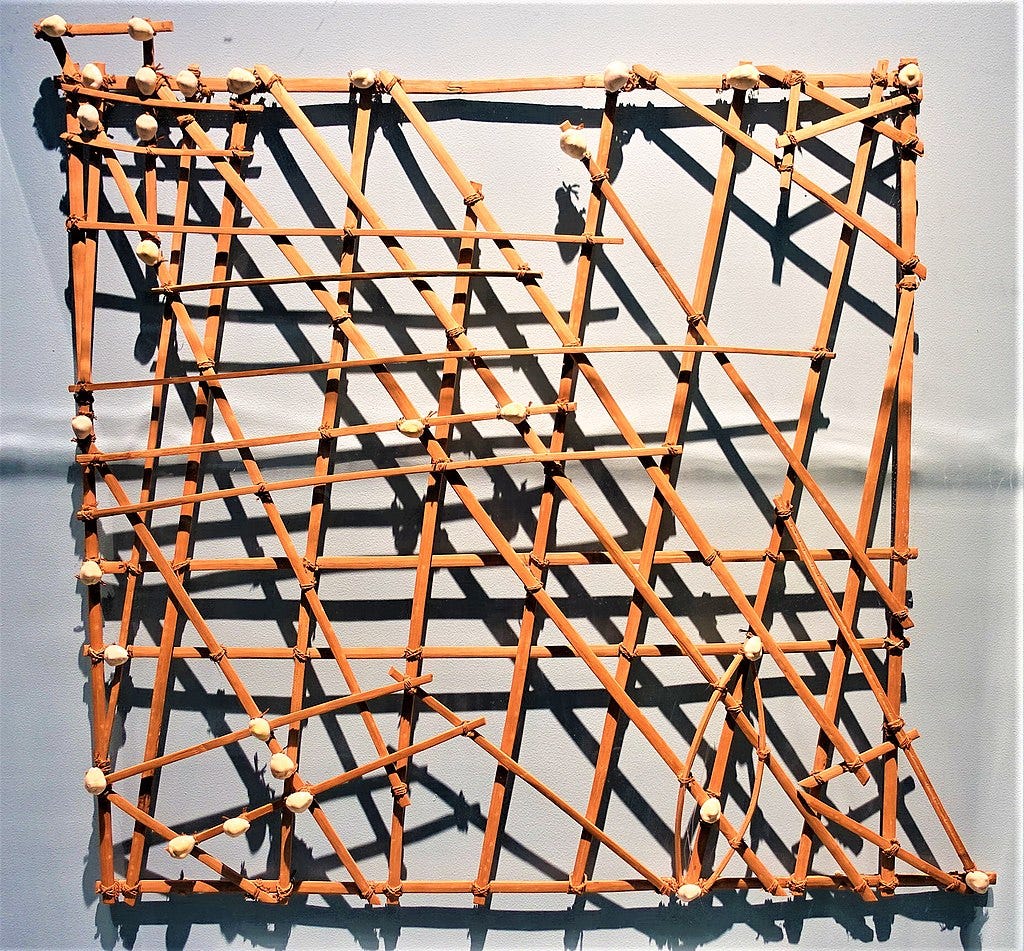#139 In the know 😉
Cursed knowledge and Marshal Island Stick Charts
This week’s Design Lobster is asking how we know what we know. From the surprising disadvantages of too much expertise, to remarkable forms of woven knowledge from indigenous Pacific Island communities. All worth knowing about, if you ask me 🦞
Question: What is the curse of knowledge?

I’m sure many of you reading this will recognise one the the great paradoxes of design. When designing something, by necessity you must become intimately familiar with every detail, so that you can be intentional about how every element comes together and responds to the surrounding context. And yet, as you do so, you can cease to truly understand how your design will be received by others because you yourself are so familiar with it.
This paradox has been called the curse of knowledge and was beautifully expressed as follows in a recent piece by Adam Mastroianni:
Door designers know immediately when their doors fall off the hinges, but they don’t know when their doors are counterintuitive because they know exactly how their doors work and it’s hard to imagine not knowing—psychologists call this the curse of knowledge. The only way designers can undo the curse is to observe people trying to open their doors, and that may never happen; by the time the doors are installed, the door designers are off designing other doors
As Adam states, the best way out of this dilemma is to expose our work to others who are fresh to it and observe through them what we might be missing. In my own experience, just walking away from it for a few hours or a weekend can also help me see obvious things I’d been missing when I was too deep inside it. One way or another you need a shift in perspective.
Design takeaway: How do you ensure that you see your design through fresh eyes regularly?
🤖 Tony Fadell’s 2015 TED talk explores the importance of adopting a “beginner’s mindset”
Enjoying Design Lobster? Share it with a friend, colleague or fellow designer 🤲🦞
Object: Marshall Islands Stick Chart
The Marshall Islands are an archipelago of over a thousand islands, islets and coral atolls in the Pacific Ocean, about halfway between Hawaii and Australia. Upon settling there around 2,000BC the native Marshallese developed a fascinating system of navigating between islands that required a sensitive understanding of different types of ocean swells and how they interacted with each island.
To teach this knowledge they produced charts made from palm ribs, woven grass and cowrie shells. The shells represented islands and the criss-cross pattern of ribs the major ocean swells and the ways they were disrupted by landmasses. A Marshallese navigator would not take this map on a journey but instead memorise the pattern and ‘read’ the pattern of the swells by crouching or lying down in their canoe whilst at sea 🤯
I’m always inspired by the imaginative ways that different human societies have found to visualise information. As our lives become more digital, it feels even more important to find ways to bring the abstract trail of ones and zeroes to life in surprising and human-centred ways.
Design takeaway: How could you bring to life some abstract information in your design?
🗺️ In Design Lobster #97 we admired some unusually tactile Tunumiit maps
Quote: “It is what we think we know already that often prevents us from learning.”
– Claude Bernard
Claude Bernard was a 19th century French physiologist who made many important advances in our understanding of human biology. His quote gives a useful lesson to designers embarking on a new brief too. Preconceived ideas and bias impede properly understanding problems and creating original solutions, so staying self-aware as you work is crucial.
Hope you can learn something new this week,
Ben 🦞
And lastly, a design remix…

Enjoyed this week’s Design Lobster? Let me know by clicking the heart button ❤️
👇


